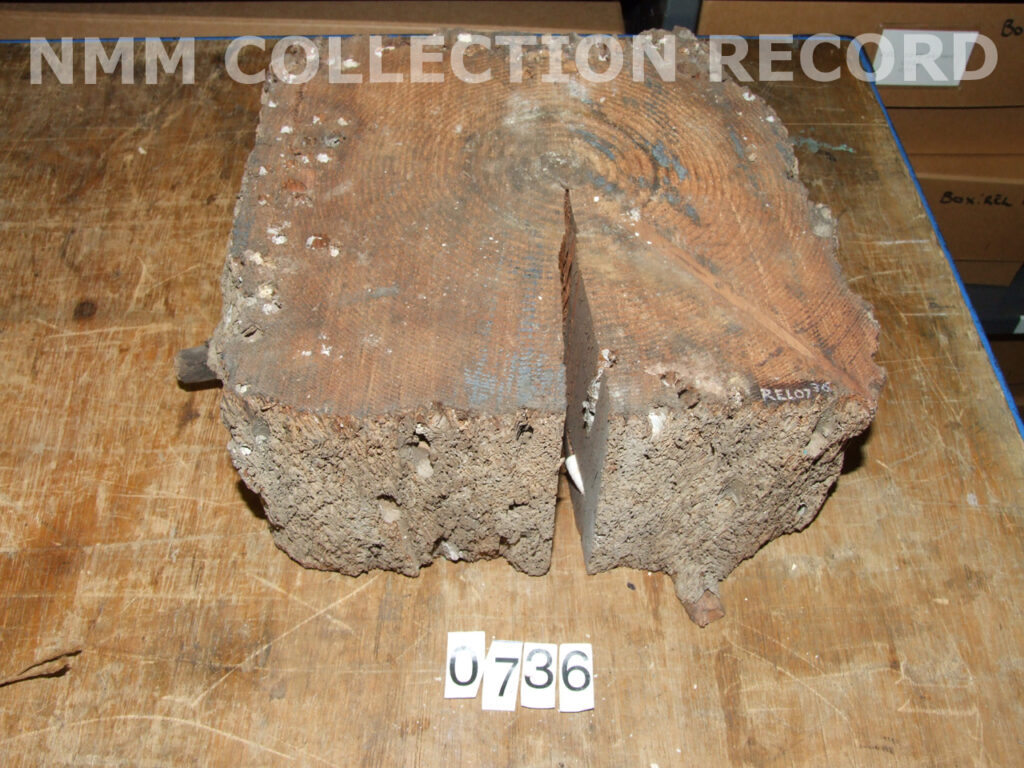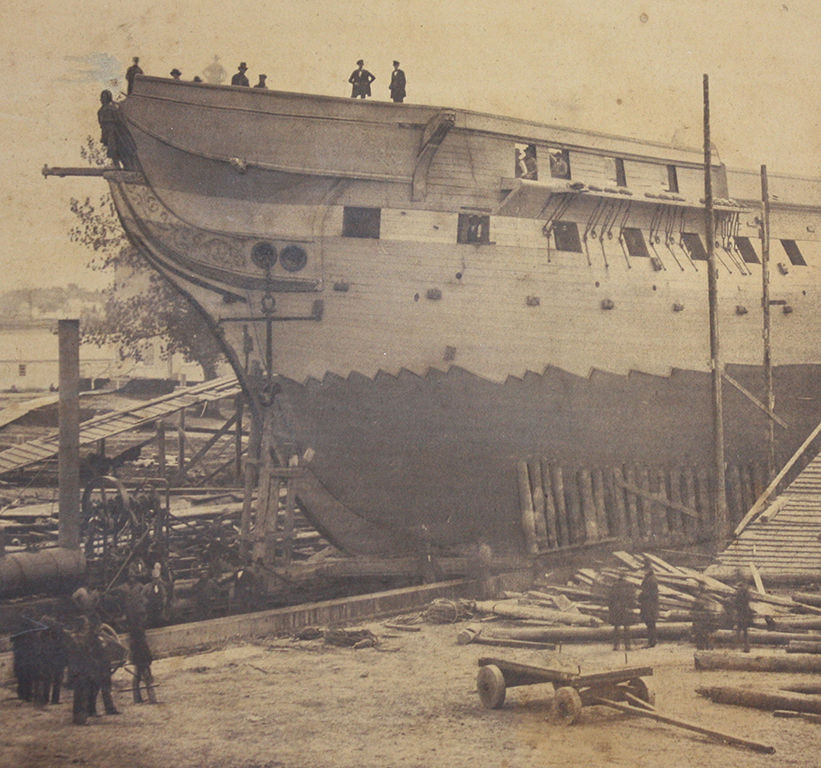On March 27, 1794, Congress passed the “Act to provide a Naval Armament” which authorized President George Washington to create the new United States Navy. Each of the six frigates that made up the new U.S. Navy was to be “copper bottomed”, that is, covered below the waterline in thousands of pieces of overlapping copper sheets. This prevented boring mollusks from destroying the wood and allowed for greater ease in cleaning marine growth from the ships’ bottoms. In a letter dated April 21, 1794, Joshua Humphreys, a shipwright from Philadelphia who was the principle designer of the original six frigates, listed “An estimate of the quantity of Timber Plank &c for a frigate…” the size of Constitution, including the copper needed – “12000 feet of sheet copper for bottom”.

It being of importance to the United States that the Frigate Constitution should be coppered on the Stocks before she is Launched into the Water – you will therefore be pleased to cause the said Ship to be coppered as high as light water mark as soon as the Bottom is prepared, as it will prevent heaving down afterwards and a Consequent heavy expense… [Secretary of War, James McHenry, to George Claghorne, 27 July 1797. Naval Documents…Barbary Wars, Volume 1, 205.]
Paul Revere, of “Midnight Ride” fame in the American Revolution, was a 60-year old silversmith, merchant, and foundry man in the 1790s. He contracted with Henry Jackson, the Boston Naval Agent in charge of obtaining materials for the building of USS Constitution, to provide the copper and brass fittings for the ship “…as cheap as anyone and as well.” Revere’s foundry drew down the English-made copper bolts used to fasten Constitution. The foundry also provided a 242-pound b/2016/01/28/copper-confessional/ell and other fittings between 1794 and 1798.
!["Birthplace of U.S. Copper Industry" Marker [Photo by Diane Zogalis, ca. 1995]](/wp-content/uploads/2015/08/Revere-Rolling-Mill-1951-marker-edit.jpg)
!["Recoppering the CONSTITUTION" by Aiden Lassell Ripley, ca. 1965. [Courtesy Paul Revere Life Insurance Co. / USS Constitution Museum Collection 282.2a]](/wp-content/uploads/2015/05/282-2a_001-copy-1024x695.jpg)
Since the ships arrival in fresh water the mussels on her bottom have all opened, and the inside entirely washed out with the run of the tide, and they are fast falling off‑‑ The oysters I find do not feel the effect of the fresh Water so sensibly, yet I have great hopes that a few days more will cause them to open and fall off in the same manner as the mussels. [Isaac Hull to Paul Hamilton, 15 Aug 1810. M125, Captains’ Letters to the Secretary of the Navy, 1805-61; 1866-85, In National Archives]
Just three days later, Hull reported that divers sent down noted that the copper was rough and missing in places and that some of the copper nails were coming loose. They attempted to patch bare spots in the sheathing.
Over the years Constitution has been recoppered at least 12 times. Throughout the 19th century, Constitution’s copper sheathing was periodically replaced and, beginning with the 1833 docking of the ship in the Charlestown Navy Yard, souvenirs were fashioned from the copper sheathing (a miniature copper kettle was made from copper removed in the mid 19th century).
![[USS Constitution Museum Collection 266.2]](/wp-content/uploads/2015/08/266.2-Salt-paper-print-1858.jpg)
![Constitution with new copper sheathing in 1930 [Courtesy Naval History & Heritage Command Detachment Boston]](/wp-content/uploads/2015/08/scan0020.jpg)
Ship has been copper sheathed from keel to 23’ 6” aft and to a height of 21’ 0” forward – 3,400 sheets of copper, 14”x 48”, in various weights; 28-oz. between keel and shoe, 26-oz. at turn of bilge and at water line; remainder 22-oz., all of which is secured to wood planking by 1 1/8” and 1 ¼” copper sheathing nails. Approximately 12.5 tons of sheathing copper, 1600 pounds [copper] sheathing nails, 38.4 tons new copper fastening[s] used; 4 tons old copper fastening [reused?], 8 tons old copper left in ship; a total of 63.7 tons of copper now in the ship. [Commandant, U.S. Navy Yard, Boston, “U.S. Frigate CONSTITUTION (IX21) – Research Memorandum”, 1931, 60.]
USS Constitution‘s copper sheathing will again be replaced during the 2015-2017 restoration. This will be the fourth time in the past century that all of the ship’s copper is replaced. Souvenirs made from copper removed from USS Constitution are available at the USS Constitution Museum Store.
The Author(s)
Margherita Desy, Historian, Naval History and Heritage Command Detachment Boston
Historian, Naval History and Heritage Command
Margherita M. Desy is the Historian for USS Constitution at Naval History and Heritage Command Detachment Boston.
Kate Monea
Manager of Curatorial Affairs, USS Constitution Museum
Kate Monea is the Manager of Curatorial Affairs at the USS Constitution Museum.
